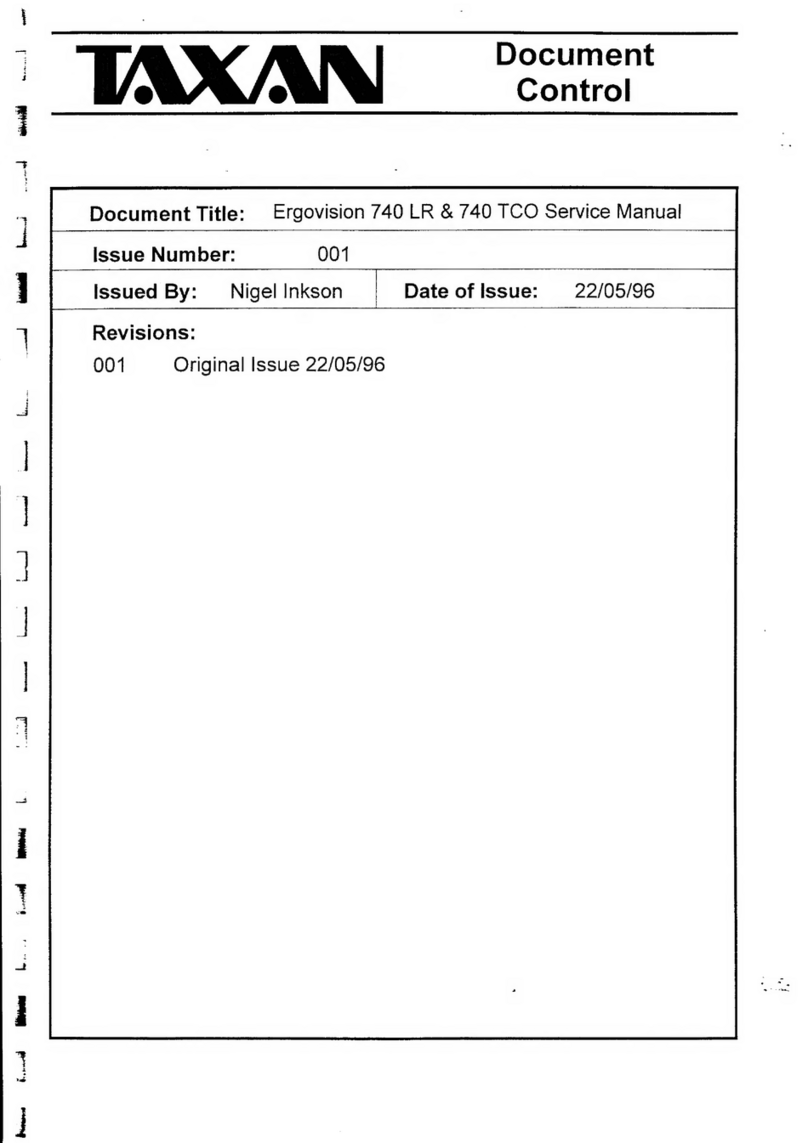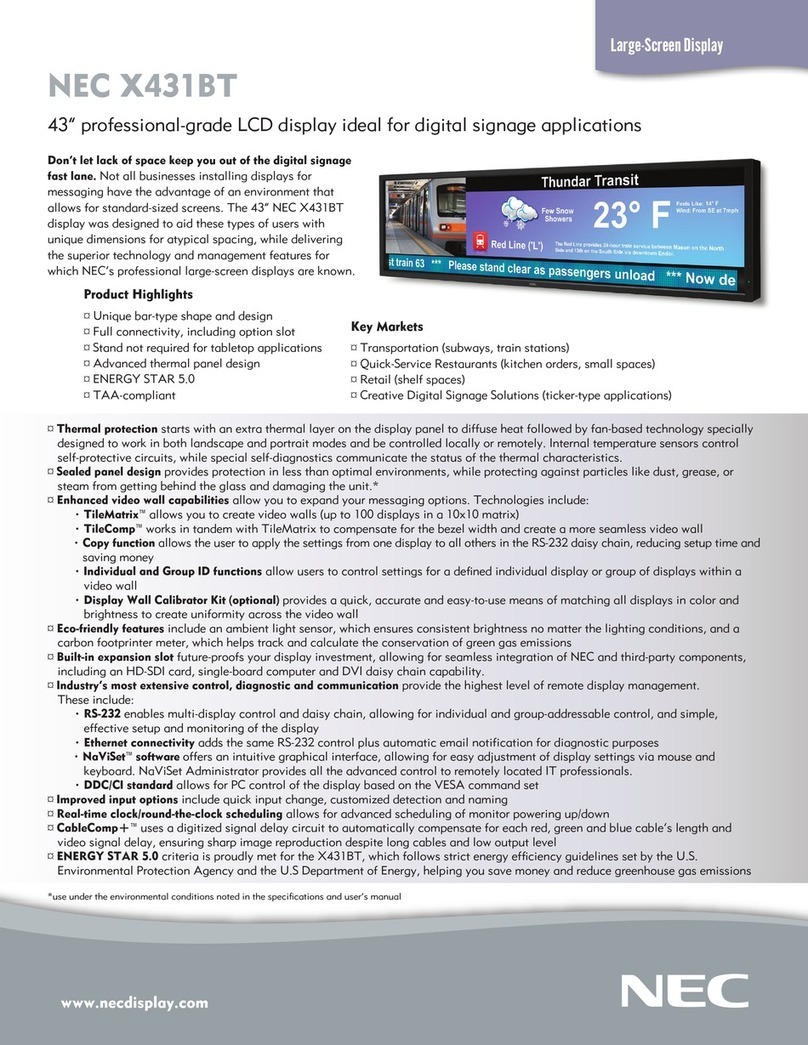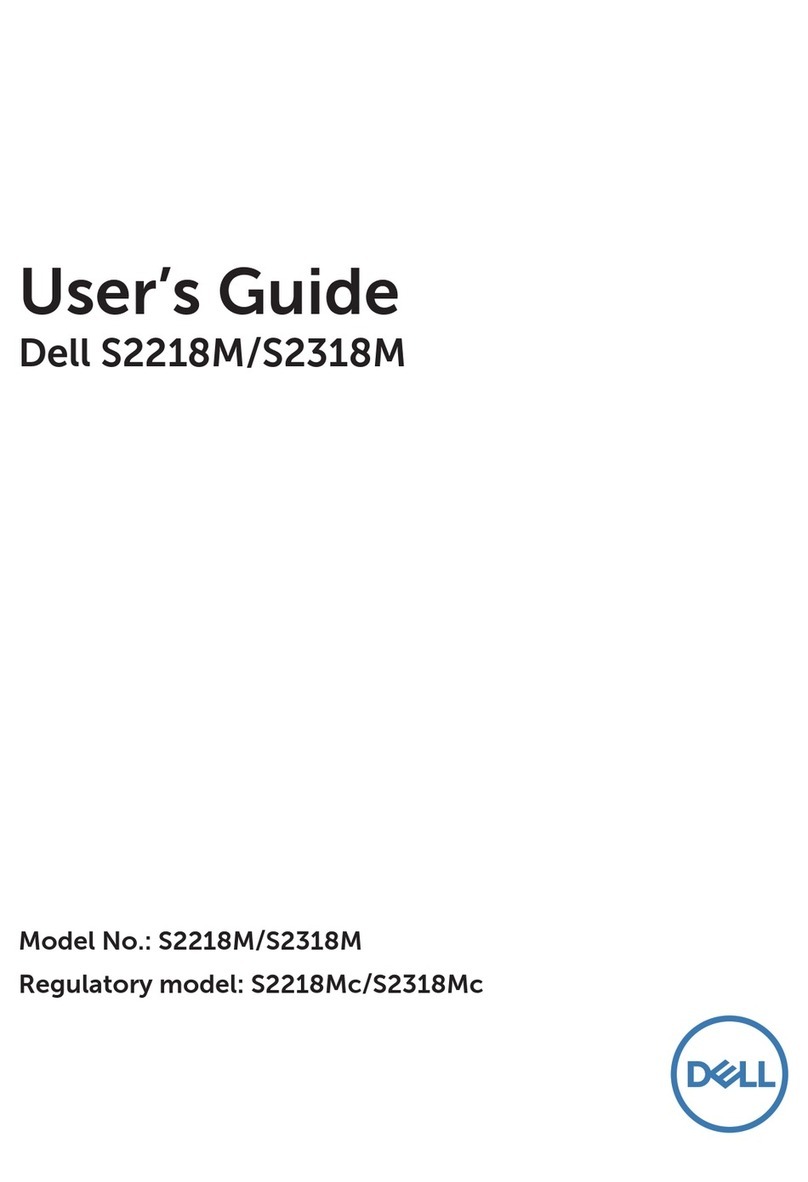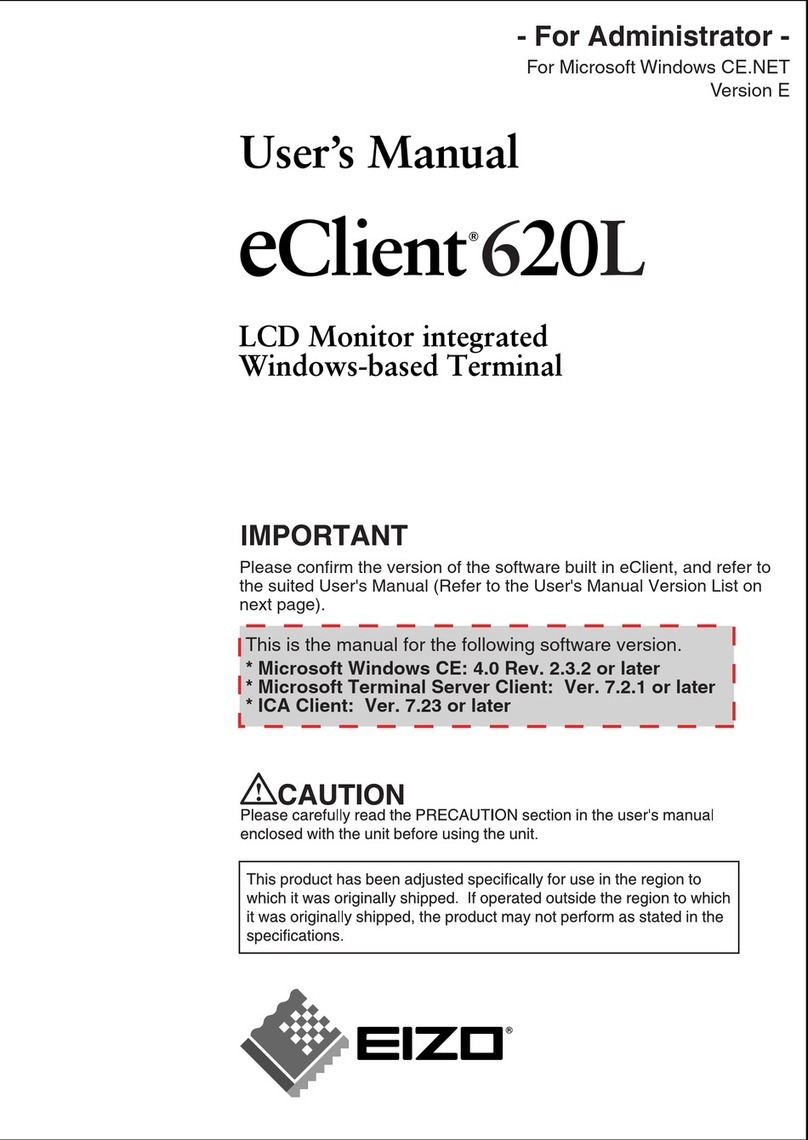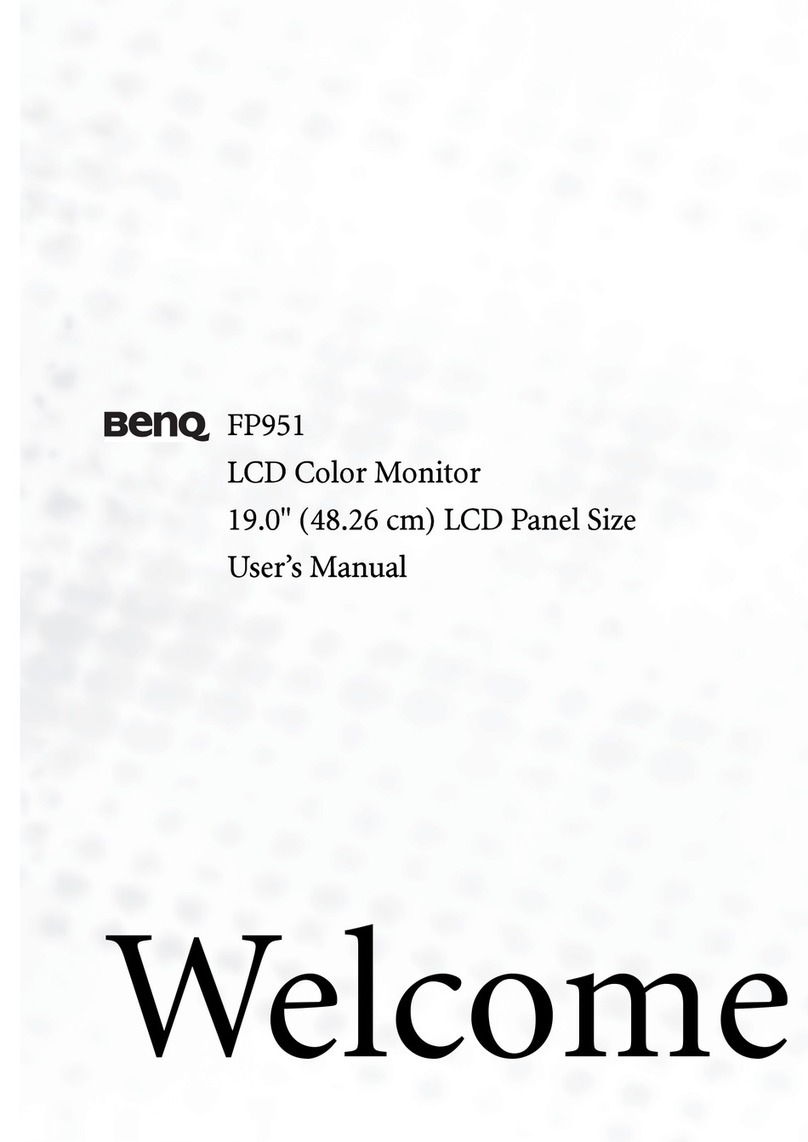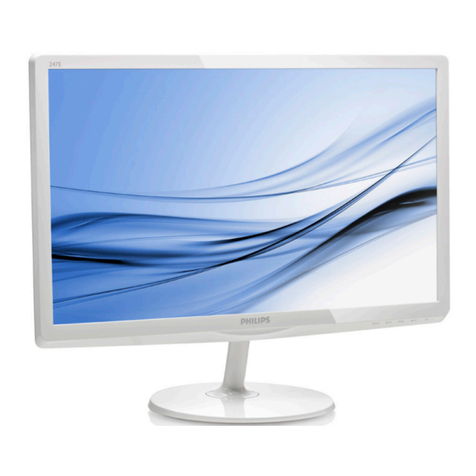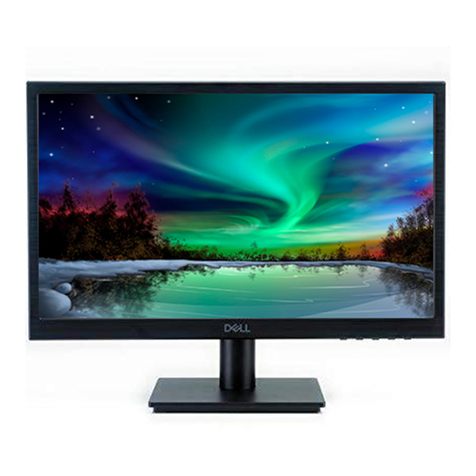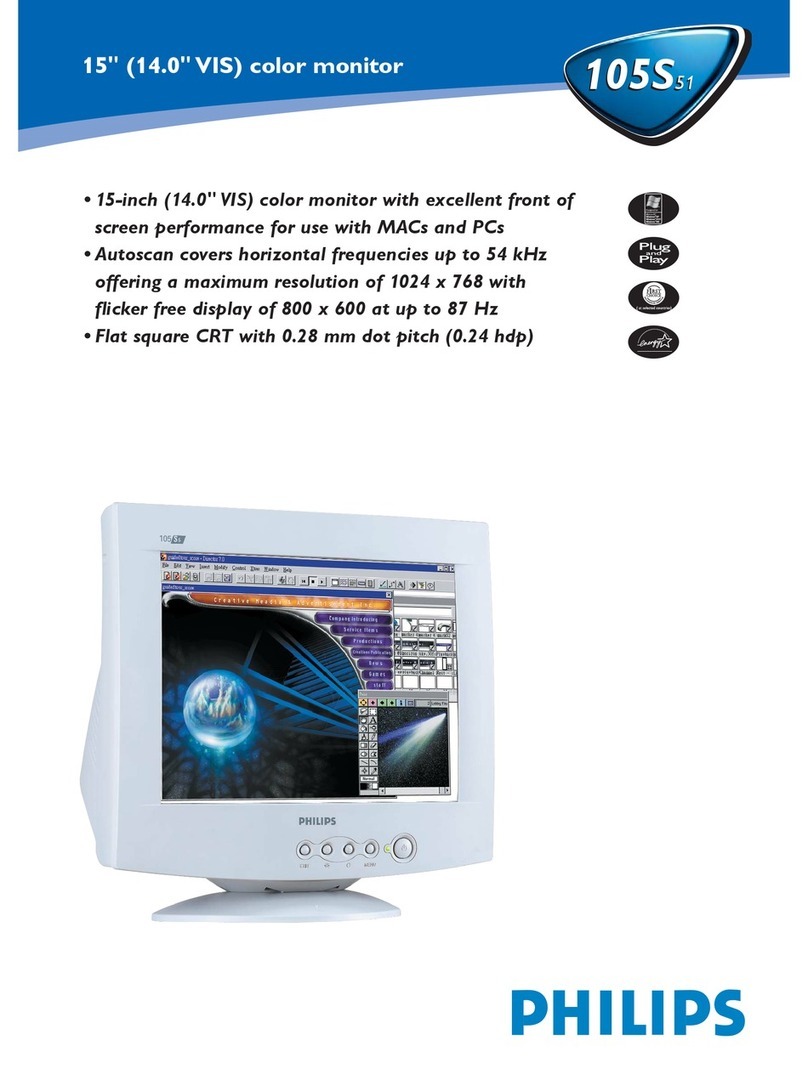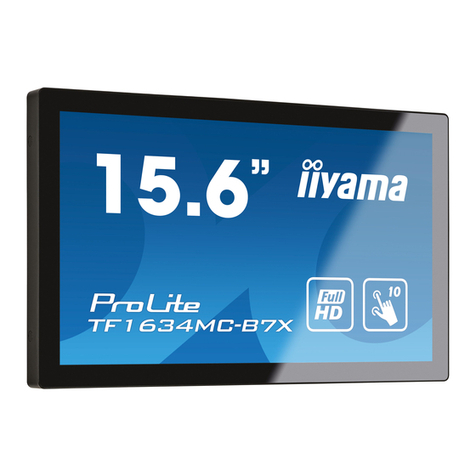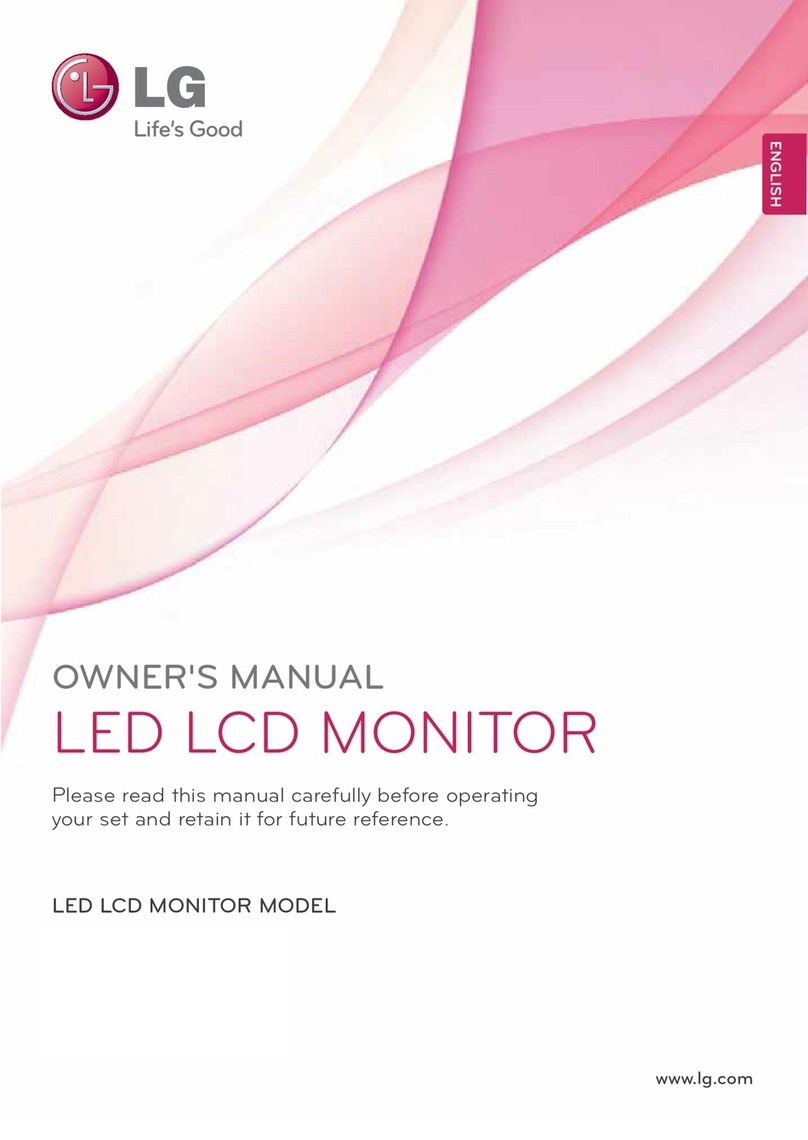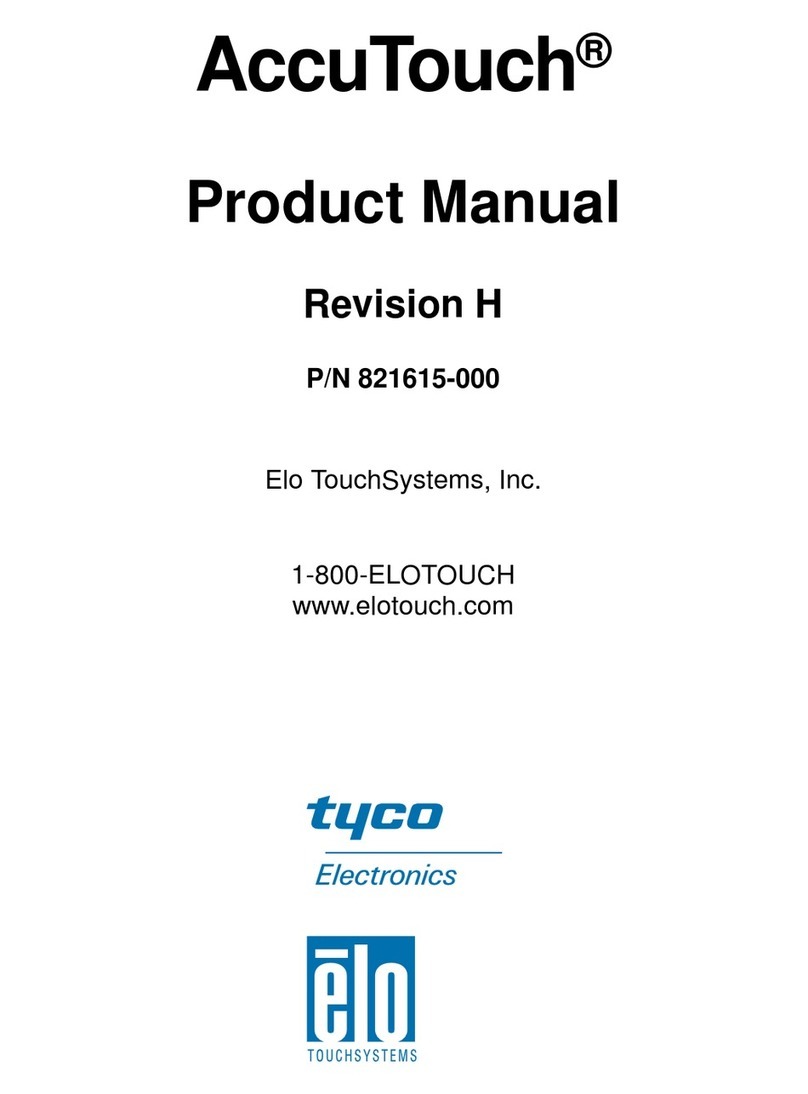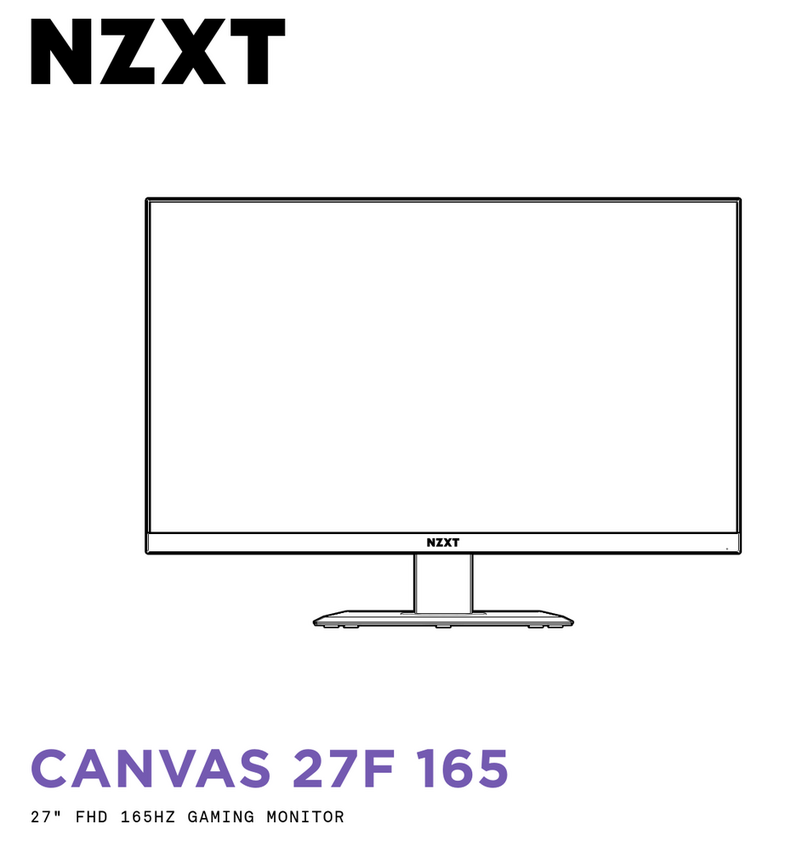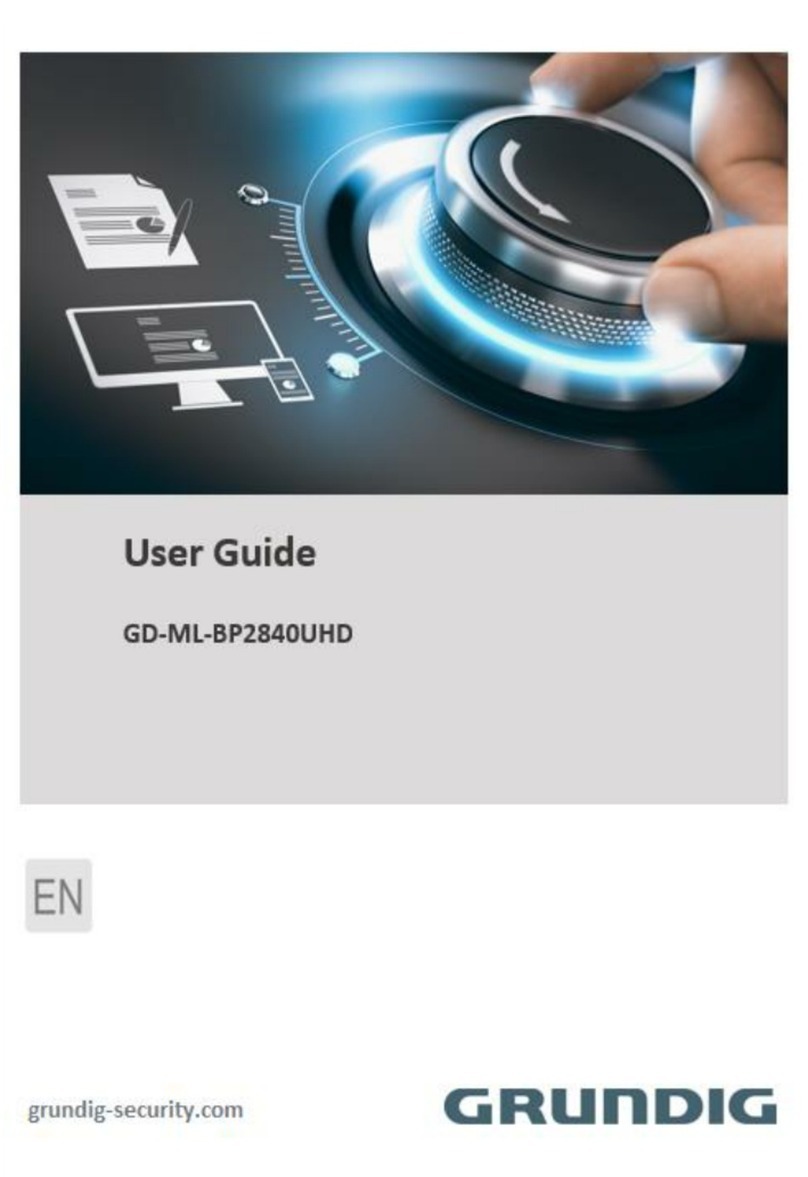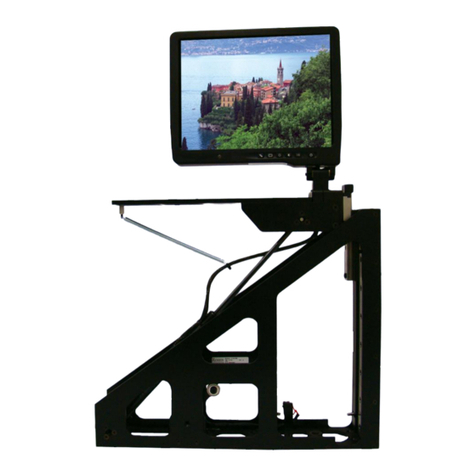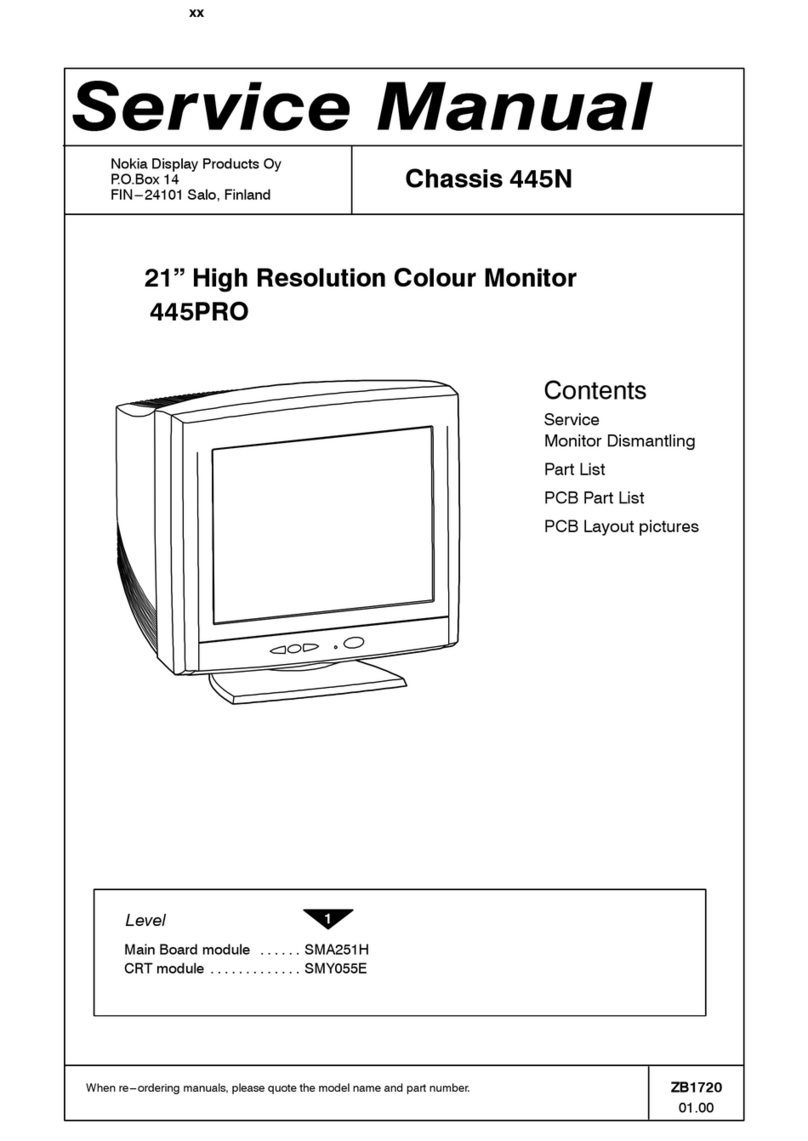Taxan KX-1212 User manual

SERVICE
MANUAL
.
12" DISPLAY MONITOR
MODEL
KX-1212/
#
121
KX-121·3/#
122

e
JKX-1212
IMPORTANT
SERVICE
SAFETY
INFORMATION
FOR
MODEL
lKX-1213
OpE-ration
of
monitor
outside
of
cabioet
or
with
ba~k
removed
invOlvE"s a
shock
hazard.
Work
on
these
models
~hould
only
be
Pf'dormed
by
thost'
who
are
thoroughly
familiar
with
precau-
t
iOlls
IH,(,p!I\!'ary
whe-n
working
011
high
volta~e
equipment.
Exc>r('ist"
care
when
servicing
this
chassis
with
power
applied.
Many
B
plus
and
hi~h
voltage
RF
terminals
are
exposed
....
hich.
if
('arelellly
contacted.
can
ca~se
serious
shock
or
result
in
damage
to
lhe
chassis.
Maintain
interconnecling
ground
lead
(,Dllllf'ctions
bf'tweeo
chaSSIS.
escutcheon
and
picture
tube
dag
'riustf'r
when.oPE-rating
chassis.
The
+B
Adj.
Control
in
thiS
monitor
is
sealed
in
order
to
protf'ct
the
user
from
X-
ray
irradiation.
The
+B
Adj.
control
should
not
normally
have
to
be
adjusted.
But
if
it
IS.
or
if
It
is
replaced
due
to
damage,
("heck
the
+B
voltage
to
assure
that
it
is
within
specifiea-
tlonS
after
adju~trnent.
Then
seal
thIS
control
according
to
the
manufacture's
specificatIon.
Certain
H V
failures
can
increase
X-
ray
radiation.
Monitor~
should
not
be
operated
with
H V
levels
exceeding
the
spe('if.jed
rating
for
their
chassis
type.
The
maximum
operating
H V
specified
for
the
chaSSIS
used
in
these
monitor
is
13.8
KV
±
0.5
at
zero
beam
current
with
a
line
voltage
of
120 V
AC.
Higher
voltage
may
also
increase
possibility
of
failure
in
H V
supply.
1 t
is
important
to
maintaiD
specified
values
of
all
components
In
the
horizontal
and
.high
voltage
circuits
and
anywhere
else
in
the
monitor
that
could
cause
a
rise
io
high
voltage
~r
op-
erating
supply
voltage.
No
changes
should
be
made
to
the
origi-
Components
shown
in
the
shaded
nal
design
of
the
monitor.
areas
on
the
schematic
diagram
and/or
identified
by
&.
in
the
replacement
p~rts
Ilst
should
be
replaced
only
with
exact
Factory
recommended
replacement
parts.
The
use
of
unauthorized
substitute
parts
may
crt'ate
a
shock.
fire.
X-
irradiation.
or
other
hazard.
To
determIne
the
presence
of
high
voltage.
use
an
accurate.
high
impedance.
H V
meter
connected
between
the
second
anode
lead
and
the
CRT
dag
grounding
device.
When
serviciDg
the
High
Voltage
System.
remove
static
charge
from
it
by
conoect-
ing
a 1 n K
ohms
resistor
in
series
with
an
insulated
wire
(such
as
a
test
probe)
between
picture
tube
dag
and
2nd
anode
lead.
(AC
line
cord
disconnected
from
AC
supplY.)
The
pfcture
tube
used
in
this
mODi
tor
emploYS
iDtegral
implo-
aion
protect\on.
Replace
with
a
tube
of
the
same
type
number
for
cODtinued
saf.ty.
Do
not
lift
picture
tube
b~
the
Deck.
Handle
the
picture
tube
onlY
when
wearing
shatter-proof
gog-
gles
aDd
after
discharging
the
high
voltage
completely.
Keep
others
without
shatter-proof
goggles
away.
PROTECT
YOUR
CliSTOMER
•••••
1.
Inspect
all
I('ad
dre~s
to
make
certaill
that
leads
are
not
plnch('d
and
lhat
hardware
IS
lIot
lodged
hetween
the
chas-
sis
and
other
metal
parts
In
the
monitor.
2.
Replace
all
protective
devices
such
as
non-metallic
con-
trol
knobs.
('abiuet
back.
adjustment
covers.
shields.
etc.
3.
To
be
sure
that
no
shock
hazard
exists.
a
check
for
the
presence
of
leakage
current
should
be
made
at
each
ex-
posed
metal
part
having
a
return
path
to
the
chassis
(jack.
cabinet
metal.
screw
heads.
koohs.
shafts.
etc.)
in
the
following
manlier.
Plug
the
AC
line
cord
directfy
into
a
120V
AC
receptacle.
(Do
Dot
use
an I
solation
Transformer
during
these
checks.)
All
tests
must
be
repeated
with
the
AC
line
cord
plug
COO!lec-
tions
reversed.
(If
necessary.
a
non-polarized
AC
adapter
plug
must
be
used
for
the
purpose
of
completing
these
check
•.
Do
not
otherwise
operate
the
monitor
with
an
adapter.)
I f
available.
measure
leakage
current
using
an
accurate
leak-
age
C'urrent
tester.
Any
reading
of
0.35
MA
or
more
is
eXces-
~Ive
and
indicates
a
potential
shock
hazard
which
must
be
corrected
before
returning
the
monitor
to
the
owner.
If
a
reliable
leakage
current
tester
is
not
available.
thiS
alternate
RlPtnod
of
measurement
should
be
used.
Using
two
clip
leads.
("onneel
a 1500
ohms.
10
watts
rel'l~tor
paralleled
by
a
O.lSMF
rapacitor.
In
series
With
a kllown
earth
~round.
s\lch
as
a
water
pipe
or
conduit.
and
the
metal
part
to
be
checked.
Use
a
VTVM
or
YOM
with
1000
ohms
per
volt.
or
higher.
sensitivity
to
measure
the
AC
voltag~
drop
across
the
resistor.
AnY
reading
of
0.35
volt
RMS
or
more
is
excessive
aDd
indicates
a
potential
shock
hazard.
This
must
be
corre('ted
before
returning
the
monitor
to
the
owner.
When
removing
springs
or
spring
mounting
parts
from
the
chassis,
shatter-proof
goggle.
must
be
worn.
Keep
others
without
.hatter-
proof
goggles
away.
•••••
SAFETY
INSPECTION
•••••
Before
returning
the
monitor
to
the
user.
perform
the
follow-
ing
safety
checks:
-3-
TEST
PROBE
TO
EXPOSED
METAL
PARTS.
TO
KNOWN
EARTH
GROUND.
.-

Outlined product
This machine
is
a
12"
display
monitor
used as a terminal connected to
IBM
personal computers.
TTL
separate signals are used for the input.
Features
This display
monitor
is
designed for use with the
IBM
personal computer.
The display
monitor
uses the latest 12-inch CRT with 90-degree deflection and anti-implosion
mechanism. This enables display
of
fine images.
The latest semiconductor technology and high-quality architecture have resulted in high reliability
and performance for heavy-duty use.
Operation
1.
Insert the
AC
power plugs
of
both
monitor
and
computer
in the
AC
power outlet.
2. Connect the
connector
cable provided
on
the rear panel
of
the
monitor
to the computer, with the
attached video cable. (See
the
figure below.)
3. Turn
on
the power switches
of
both
monitor
and computer, and the power lamp (green LED pro-
vided
at
the
top
right
of
the front panel
of
the
monitor)
lights and then the raster (or image)
appears
on
the
screen.
Connector cable
~_
Power cable
11111I11111
iii/iilliiiii
00
IBM
personal computer
J
-~
~
Connector cable
\
Video
IfF card/video
output
connector
IBM
personal computer
main unit
Connection Example
-4-
.-

r
LAMP
AND
CONTROLS
(
"-
I
AC
power
cable
Connector
cable
oJ'
~
f
i-
~
I
Handle
-5-
Power
indicator
lamp
(green
LED)
Power
switch
Contrast
control
(CONTRAST)
Brightness
control
(BR
IGHT)
Vertical
sync.
control
(V.
HOLD)
Vertical
size
control
(V.
SIZE)
Focus
control
(FOCUS)
Horizontal
size
control
(H.
SIZE)
Vertical
linearity
control
(V.
LIN.)
Vertical
position
control
(V.
POS!.)
Horizontal
position
control
(H.
POS!.)
Horizontal
sync.
control
(H.
HOLD)
'90
••
~
__
••

r
Adjusting The
Displ~y
1.
CONTRAST
The contrast becomeshigher
as
the CONTRAST control
is
turned clockwise, and becomes
lower
as
it
is
turned counterclockwise.
2.
BRIGHT
The screen becomes brighter
as
the BRIGHT control
is
turned clockwise, and becomes
darker as it
is
turned counterclockwise.
3.
V.
HOLD
When the screen image flows or overlaps vertically, adjust the
V.
HOLD to get the correct
image. (See illustration 1.)
4.
H.
HOLD
When the screen image appears to
give
a horizontally striped pattern
or
the image shifts left
or
right, adjust the
H.
HOLD to get the correct image. (See illustration 2.)
5.
V.
SIZE
When the vertical size
of
the screen image
is
too short
or
too long, adjust the
V.
SIZE to get
the correct size. (See illustration 3.)
6.
H.
SIZE
When the horizontal size
of
the screen image
is
too
short or too long, adjust the
H.
SIZE to
get the correct size. (See illustration 4.)
7.
V.
POS!.
When the screen image shifts vertically, adjust the V. POS!. to get the correct image. (See
illustration 5.)
8.
H.
POS!.
When the screen image shifts horizontally, adjust the H. POS!. to get the correct image. (See
illustration 6.)
9.
FOCUS
Adjust the FOCUS so as to get the sharpest image. (See illustration 7.)
10.
V.
LIN.
Adjust the
V.
LIN. so
that
the height
of
characters
is
even over the whole screen. (See illustra-
tion 8.)
11. SUB-BRIGHT
Tum
the BRIGHT
control
to
maximum and
the
CONTRAST control
to
minimum. Adjust
the
SUB-BRIGHT
control
(R283)
just before
the
video with an intensity signal disappears.
-6-

r
-
Problem Remedy Problem Remedy
The
screen image flows Adjust
the
V.
HOLD
The
screen image
sh
ifts
Turn
the
V.POS!.
vertically.
control.
up. control
counter-
clockwise.
1
~
I f I
5
The
screen image appears
to
Adjust
the
H.
HOLD
The
screen image shifts Turn
the
V.
pas!.
give a horizontally striped control.
down.
control clockwise.
pattern.
2 [ I
f-
,
-
The
vertical size
of
the
screen
Turn
the
V.
SIZE
The
screen image shifts
Turn
the
H.
pas!.
image
is
too
short.
control counter- right.
control
counter-
clockwise. clockwise.
I : I G
3 6
The
vertical size
of
the
screen
Turn
the
V.
SIZE
The
screen image shifts
Turn
the
H.
pas!.
image
is
too
long. control
cI
DC kwise. left.
control
clockwise.
IT]
EJ
The
horizontal size
of
the
Turn
the
H.
SIZE
The
screen image
is
Adjust
the
FOCUS
screen image
is
too
wide.
control
clockwise unfocused.
control
with
the
. with
the
attached attached screw-
core
rod.
[XJ-~
driver.
B 7
4
The
horizontal size
of
the
Turn
the
H.
SIZE
The
height
of
characters Adjust
the
V. LIN.
screen image
is
too
narrow.
control
counterclock-
is
uneven over
the
whole
control.
wise with
the
screen.
attached
core
rod.
B 8
HHH
----------
HHH
--------
HHH
-------
;-
..........
:-
-7-

r
KX-1212
KX-1213
SP~CI
FICATIONS
GENERAL SPECIFICATIONS
CRT (Braun) tube:
12"
635
mmR
• Screen:
Non-glare
• Phosphor:
P39, PUL
Input
signal:
T.T.L. Level Separate signals.
H.SYNC:
TTL
compatible positive
sense.
V.SYNC:
TTL
compatible negative
sense.
Source voltage:
Commercial use power source for each
country
Power consumption:
24 W (0.22 A)
Cabinet:
Plastic
External dimension:
355
(W)
x 295 (H) x
318
(D) mm
(14 [W]
xlI.
6
[H]
x 12.5
[D]
in.)
Weight:
6.8 kgs.
(15.0lbs.)
Scanning frequency:
18.432 kHz (horizontal)
50 Hz (vertical)
ELECTRICAL SPECIFICA
nONS
Video amp. band width:
More than 20
MHz
(-3
dB)
Non-linearity:
10%
maximum (horizontal)
10%
maximum (vertical)
Display area:
205 ± 4 mm
150 ± 4 mm
Geometric distortion:
2.0% maximum
Storage ternperature:
-40
-+50°C
Operation temperature:
-10
-+40°C
Controls:
Internal
a) Focus
b) Horizontal size
c) Sub-brightness
Type:
Model number
(8.1 in.)
(5.9 in.)
External
a)
Vertical hold
b) Vertical size
c) Vertical linearity
d) Vertical position
e) Horizontal hold
f)
Horizontal position
g)
Contrast
h) Brightness
Phosphor
KX-1212-0 Green (P39)
(PUL)
KX-1213-0 Amber
L
powe!
source type
-8-
U:
121,122,120
V
AC
60Hz (USA)
A:
240
V
AC
50Hz (AUSTRALIA)
E:
220
V
AC
50Hz (EUROPE)
B:
240 V
AC
50Hz (U.K.)
.-

r
I
SYMBOL
NO.-
DESCRIPTION Q'TY
-
FIXED RESISTOR
R222 CARBON 1/8W
68-J
1
R230 CARBON 1/8W
100-J
1
R232 CARBON 1/8W
100-J
1
R234 CARBON 1/8W
100-J
1
R601 CARBON 1/8W
100-J
1
R730 CARBON 1/8W
100-J
1
R721 CARBON 1/8W
240-J
1
R231 CARBON 1/8W
510-J
1
, R632 CARBON 1/8W
820-J
1
R628 CARBON 1/8W
820-J
1
R620 CARBON 1/8W
1K-J
1
R631 CARBON 1/8W
1K-J
1
R712 CARBON 1/8W
1K-J
1
R219 CARBON 1/8W
1.5K-J
1
R220
CARBON 1/8W
1.5K-J
1
R610 CARBON 1/8W
2.2K-J
1
R603 CARBON 1/8W
8.2K-J
1
R604
CARBON 1/8W
10K-J
1
R605 CARBON 1/8W
10K-J
1
R613 CARBON 1/8W
16K-J
1
R702 CARBON 1/8W
13K-J
1
R706 CARBON 1/8W
15K-J
1
R615 CARBON 1/8W
20K-J
1
R614 CARBON 1/8W
20K-J
1
R609 CARBON 1/8W
20K-J
1
R701 CARBON 1/8W
68K-J
1
R612 CARBON 1/4W
3.3-J
1
R711 CARBON 1/4W
33-J
1
R710
CARBON 1/4W
47-J
1
R630
CARBON 1/4W
100-J
1
R902 CARBON 1/4W
680-J
1
R618 CARBON 1/4W
680-J
1
R731 CARBON 1/4W
1K-J
1
R709 CARBON 1/4W
1.6K-J
1
R704
CARBON 1/4W
5.6K-J
1
R607 CARBON 1/4W
30K-J
1
R285 CARBON 1/4W
82K-J
1
R619 CARBON 1/2W
6.2-J
1
R225 CARBON 1/2W
100-J
1
R910
CARBON 1/2W
330-J
1
R623 CARBON 1/2W
390-J
1
R705 CARBON 1/2W
430-J
1
R784
CARBON 1/2W
lK-J
1
R720
CARBON 1/2W
8.2K-J
1
R781 CARBON 1/2W
lOK-J
1
R221 OXIDE METAL
3W
lK-J
1
R782 METAL 1/2W
560K-J
1
.
-.
.........
:
-9-

r
SYMBOL
NO.-
DESCRIPTION
Q'TY
VARIABLE RESISTOR
R233 CARBON 1/4W
500-J
1
R283 CARBON O.lW
500K-J
1
R284
CARBON 1/4W
500K-J
1
VS690 CARBON O.lW 1
R783 METAL 1/2W
2M-J
1
CAPACITOR
C602 CERAMIC
50V
(58P-K 1
C775 CERAMIC 50V
100P-K
1
C611 CERAMIC
4700P-K
1
C230 CERAMIC
10000P-K
1
C910 ELECT. 10V 330J.!-M 1
C601 ELECT. 16V lOJ.!-M 1
C610
ELECT. 16V 22J.!-M 1
C205 ELECT. 16V 100J.!-M 1
C608 ELECT. 16V 100J.!-M 1
C613 ELECT. 16V 470J.!-M 1
C707 ELECT. 16V 470J.!-M I
C713 ELECT. 16V 470J.!-M I
C906 ELECT. 16V 470J.!-M 1
C612 ELECT. 25V -1000J.!-M I
C605 ELECT.
50V
IJ.!-M I
C703 ELECT. 50V IJ.!-M I
C255 ELECT.
IOOV
100J.!-M 1
C218 ELECT.
IOOV
220J.!-M 1
C904 ELECT. 25V 4700J.!-M I
Lt, C773 ELECT.
25V
6.8J.!-M I
C607
ELECT. 25V IJ.!-K I
C708 POLYESTER 50V O.OOIJ.!-K 1
C606 POLYESTER
50V
O.OO47J.!-K
I
C702 POLYESTER
50V
O.OO47J.!-K
1
C709 POLYESTER
50V
O.OIJ.!-K 1
C204
POLYESTER
SOV
O.OlJ.!-K I
C701 POLYESTER
50V
O.OIJ.!-K I
C603 POLYESTER
SOV
O.033J.!-K I
C604
POLYESTER 50V
O.033J.!~K
I
C705 POLYESTER
50V
0.033J.!-K I
C609 POLYESTER 50V O.047J.!-K I
C710
POLYESTER
50V
O.068J.!-K I
C704
POLYESTER
50V
-O.IJ.!-K I
it.
C771 POLYPRO
630V
0.OI2J.!-J I
it.
C772 POLYPRO
630V
0.OI2J.!-J I
C257 POLYPRO
630V
O.022J.l-J I
C791 POLYPRO
630V
0.022J.l-J I
it.
C901 POLYPRO 12SV O.lJ.l-M 1
it.
C902
CERAMIC AC250V
IOOOP
1
it.
C903 CERAMIC AC2S0V
lOOOP
I
.-
.
-.
.........
:
..
SAFETY CRITICAL COMPONENT.
C90
I,
C902 &
C903:
Used only
by
the
version
U.
-10-

r
SYMBOL NO. -
--
DESCRIPTION
-
COIL
L601 AXIAL 27/l
Lt
L771 LINEAR
Lt
L772 SIZE
Lt
L901 LINE FILTER
TRANSFORMER
T701
H.
DRIVE
&.
.D02
..£.-B.T
it.
T901 DRIVE TRANS
DIODE
D710 SILICON V06E
D733 SILICON
VI1J
D731 SILICON U06C
D210 SILICON 1S2076/1S2473H
D701 SILICON
USI040
D702 SILICON
USI040
D901 SILICON
SRIK-8
D902 SILICON
SRIK-8
D903 SILICON
SRIK-8
_
D904 SILICON
SRIK-8
D734 SILICON
SRIK-4
D601 SILICON
8U-4
D732 SILICON
8U-4
D905 LED
SLP-251B
ZD910 ZENER
HZ-5
Bl
TRANSISTOR
Q203 SILICON
2SC945A-K
Q701 SILICON 2SC3209 M/L/K
Q702 SILICON
2SC2373-K/L
Q216 SILICON 2SA844 D/E
Q204 SILICON
2SC2688-L
IC
IC201 HD7404P
Lt
IC701 /lPC1379C
it
IC901
SI-3122V
LT202 SPARK GAP
Lt
F901 ST3 0.75A
Lt
F902
MT4 2.0 A
.&.
DY DEFLECTION YOKE
&
Bl
C12M40P39 (D)
ARF
(FOR KX-1212 TYPE)
C12M40PUL (D)
ARF
(FOR
KX-1213 TYPE)
&:
SAFETY CRITICAL COMPONENT
L901: Used only
by
the version
U.
-11-
Q'TY
1
1
1
1
1
1
1
1
1
1
1
1
1
1
1
I
1
1
1 I
1
1
1
1
1
1
1
1
1
1
1
1
1
1
1
1
.-
.

r
SYMBOL NO. DESCRIPTION Q'TY
6 S901 -
V577-0052
1
CRT SOCKET 1
.-
.
...
...
,
....
:
it. :SAFETY CRITICAL COMPONENT.
-
12-

1. Operation
1-1
Power stabilized circuit
Rectification +12 V control
D90l
...:
0904
IC901 +12 V
output
The
output
voltage
is
controlled automatically by
IC90l,
which outputs a constant
12
V voltage
(12
±O.2 V).
This
IC
contains an overcurrent protection circuit which
is
designed to cause the output voltage to
drop to 0 V automatically
if
the
output
current exceeds 2.5
A.
1.2 Video signal
input
circuit
r----------,
VIDEO R230
111
r--,
I R232
o9
>-....o-:8"--
___
~--~..J\f\fIr-,
...
---J0210
INTENSITY
e>---f\N\,.---t>-I
I I
I I
L
__________
J
H07404
To video amplifier
~r---"""'--
Q203, Q204
The video signal and the intensity signal (hereinafter referred to
as
INT. signal) which are received by
the TTL
IC
HD7404 drive the video amplifier (Q203, Q204) directly, and they are
output
to the
CRT cathode.
Q2l
0
is
in
OFF
when both the video signal and the INT.
output
signal are being
output.
As
a result
of
this, the video signal level and the picture on the screen do not change even
if
the contrast VR value
is
changed. Since
Q2l
0
is
put
in the
ON
state when the INT. signal
is
not
output,
changing the contrast value causes the branch point to move. Thus the brightness level
changes and the contrast picture appears on the screen.
-13-
--

1-3 Vertical deflection circuit
IC701
~
Vertical
output:
8 OutDut Vertical
DY
't
6
From IC201 4Oscillationi
~Voltage
booste~
pin 2
\\
1
""1'
I
I
I '
I '
I I
I ,
! £ >
IE:
I I
Fly-back time Scanning time
period period
,
I
I
)1
2
C607 +
n
~
n""
I 3 I 5
111
7
Sawtooth oscillation voltage
is
generated by C607 charge
and discharge. During vertical fly-back, C607
is
charged by
IC701 pin
No.2
and a switching transistor built
into
the
Ie.
During scanning the electric
potentiallwoers
gradually,
because C607
is
discharged
by
R607 connected to
IC
terminal pin
No.3
and vertical linearity volume (VS690 @).
When
the
electric potential reaches
that
electric
potential
of
IC
terminal pin No.
I,
charge
is
restarted by
switching transistor built into the IC, and electric potential
returns
to
the fly-back.
The
output
voltage sent
to
the deflection yoke is amplified by the amplifier circuit built in the IC,
and
output
from
Ie
terminal pin
No.8.
This
IC
incorporates a voltage booster circuit to reduce
power consumption, and uses diode D601 and condenser C608 connected
to
ICterminal
pin
No.5
and IC pin
No.7
to
boost the fly-back voltage up to
about
24
V.
-
14-
--

r
1-4 Horizontal deflection circuit
IC201
~
pin 12
~
(1) AFC circuit
15 J
SY~Chr~nousl
I ISolation
1
~
AFC J
h3 I
IShunt regulator 10
I
Oscillation Horizontal
predrive
t12
9
Horizontal Horizontal
drive
output
Q701 Q702
The triangular wavefonn voltage generated by the fly-back transfonner pulse is sent
to
IC
pin
No. 14. The synchronous signal
is
sent directly
to
the AFC circuit from the synchronous isola-
tion circuit built into the
Ie.
Both phases are compared
at
the AFC circuit, and the current in
proportion
to
the
phase difference
is
output
from
IC
pin No. 13. This current
is
sent
to
the
horizontal oscillation circuit via R701
to
control the oscillation waveguide constant.
(2) Oscillation circuit
Oscillation voltage
of
the
triangular waveform is generated by C702. C702 is charged by R702
and
H.
HOLD volume VS690
CD,
and discharged by
the
circuit built
into
the
Ie.
From this
triangular wavefonn a square wave
of
1:2
is
generated, which is
output
from
IC
pin
No.9.
(3) Shunt regulator circuit
Vcc source power
of
the
AFC circuit, oscillation circuit and horizontal predrive circuit is
supplied from the shunt regulator circuit. Hence, the horizontal circuit
of
this
IC
operates by
supplying 6
-7
V
to
IC
pin
No.1
O.
(4) Horizontal drive
output
circuit
-A 500 mAp-p current
must
be supplied
to
the
base
of
horizontal
output
transistor Q702. Hence,
the oscillation voltage is amplified
by
drive circuit consisting
of
Q70
I and
T70
1.
When Q702
continues, fixed voltage accumulated in C773 passes through the horizontal coil. Hence, linearly
increasing current passes through
the
coil. When Q702 enters a discontinuity mode, current
which has so far passed through Q702 passes through C771 and C772. As a result, a resonance is
caused
by
the condenser and coil.
At
the half resonance cycle the current direction is half-turned. Thereafter current passes
through damper diode
(0710).
If
Q702 enters a continuity mode again while the current passes
through diode
0701,
the
cyclic sawtooth current passes through the coil.
-15-
.-

Q702 continuity
frequency Resonance
frequency
Damper diode
continuity frequency
The resonance caused
by
the
condenser and coil generates a 200 Vp-p pulse voltage. This voltage
is
boosted
by
T702
(FBT)
and
supplied to each electrode, video
output
circuit, etc.
of
the CRT.
-
16-
.-

2. Repair table
-.
Turn
the
power source ON and connect the
input
signal.
No raster appears.
The source voltage
is
abnonnal.
(Check the
+B
line and horizontal
output
circuit.)
The source voltage
is
nonnal.
(Check
the
horizontal circuit, CRT circuit and video circuit.)
LHorizontal stripe on screen (Vertical circuit)
Vertical stripe on screen (DY circuit)
Raster appears.
The horizontal amplitude
is
short. (horizontal circuit)
The vertical amplitude is abnormal. (vertical circuit)
The
st.:reen
is
dark. (CRT peripheral circuit)
Horizontal synchronization is
not
available.
(AFC horizontal oscillation circuit)
Vertical synchronization is
not
available. (vertical circuit)
The picture appears.
Brightness differs between
the
vertical character dots
and
the
horizontal character dots. (video circuit)
The focus
is
bad. (CRT peripheral circuit)
-
17-
.-

r
*IC701
*Q702 b
3.
Troubleshooting
No raster appears.
(1)
Trouble in power source circuit and horizontal deflection circuit.
-
No
raster appears.
Does
the
raster appear
at
YES
ConfIrm the brightness
maximum brightness and and
c(
.,trast position
contrast?
NO
Trouble in power source
circuit and horizontal
circuit
c<
Is
IC901 pin
No.3
voltage 16
±2
VDC?
"""
+8
'olta",
no=011
)-
NO
(12 V
DC)
Check the power
YES source circuit.
Is
horizontal Check the horizontal
oscillation circuit
output
NO
oscillation circuit.
available?
9
YES
Is
horizontal drive
NO
Check the horizontal
output
available? drive circuit.
ase
YES
Check the horizontal
outpu
t circuit.
-18
-
r---------
I
c::?
I Adjust the
I
----------1
sub-brightness. I
I
L
_________
___________
1
YES
Check the horizontal
circuit and
+B
line.
c::?
c::?
r--------
--
-----,
I
1 R701, R702, R704 I
I
I
I
I VS690 (j),C70
I 2,IC701
L
_________
_______
J
,---------
-,
I
I
I
I
I R710, R711
I
I T701, Q701
I
L
_________
_ J
.
.-

(Horizontal circuit)
H. POSI. I
VS690
Q) 5K-B
TC709
r1n
0.01
(MYL)
C705
0.033
(MYL)
• +B (12V)
~
__
~
______
~
FBP
C707
470/16
IH. HOLD I
VS690
5K-B
+
R705
430 (1/2W)
R609
20K
+B
(12V)
C775
IC701
____________________________________
~100P
FBT
DY
~--~----~------
I I
.-
Positions measured Voltage Function
IC701 pin
No.9
0.3 V Drive
output
IC701 pin
No.1
0 6.5 V Power source
IC701 pin No.
11
1.3 V Oscillation
Q701 base 0.3 V
Q701 collector 11.0 V
Q702 base
-6.4
mV
Q702 collector
20.0V
.
-19-
Q701
2SC3209
M/L/K
T701
.-

-20
-

No raster appe!lrs. (2) Trouble in FBT peripheral circuit.
No
raster appears.
High voltage circuit
and CRT circuit
are defective.
Is
high voltage
>-
sent to the anode?
'--------r----'
YES
NO
Is
the CRT heater
voltage normal?
NO
YES
Is
a pulse supplied
to
the horizontal
output
collector?
YES
Check FBT.
Check the heater voltage.
NO
Check the horizontal
output
circuit.
:me
voltag1 IThe screen
is
dark.
IS
lr.-
The contrast
is
bright.
I C713, D731 The focus
is
bad.
~--------------~
Is
each CRT electrode
voltage normal?
NO
Check the +60 V, +600 V
)-..:.....;:;......-
..
, and
-70
V circuits.
Test points:
®,
@ & ©
YES
Is
the CRT cathode
voltage normal?
YES
Check the CRT.
NO
OV
L~
Check the video circuit.
-21-
R782, R784, R260
R784, R285, R283
D733, D732, D734
r---------------,
I I
I R221, R225 I
: C208 1
L
________________
~
.-
This manual suits for next models
1
Table of contents
Other Taxan Monitor manuals
